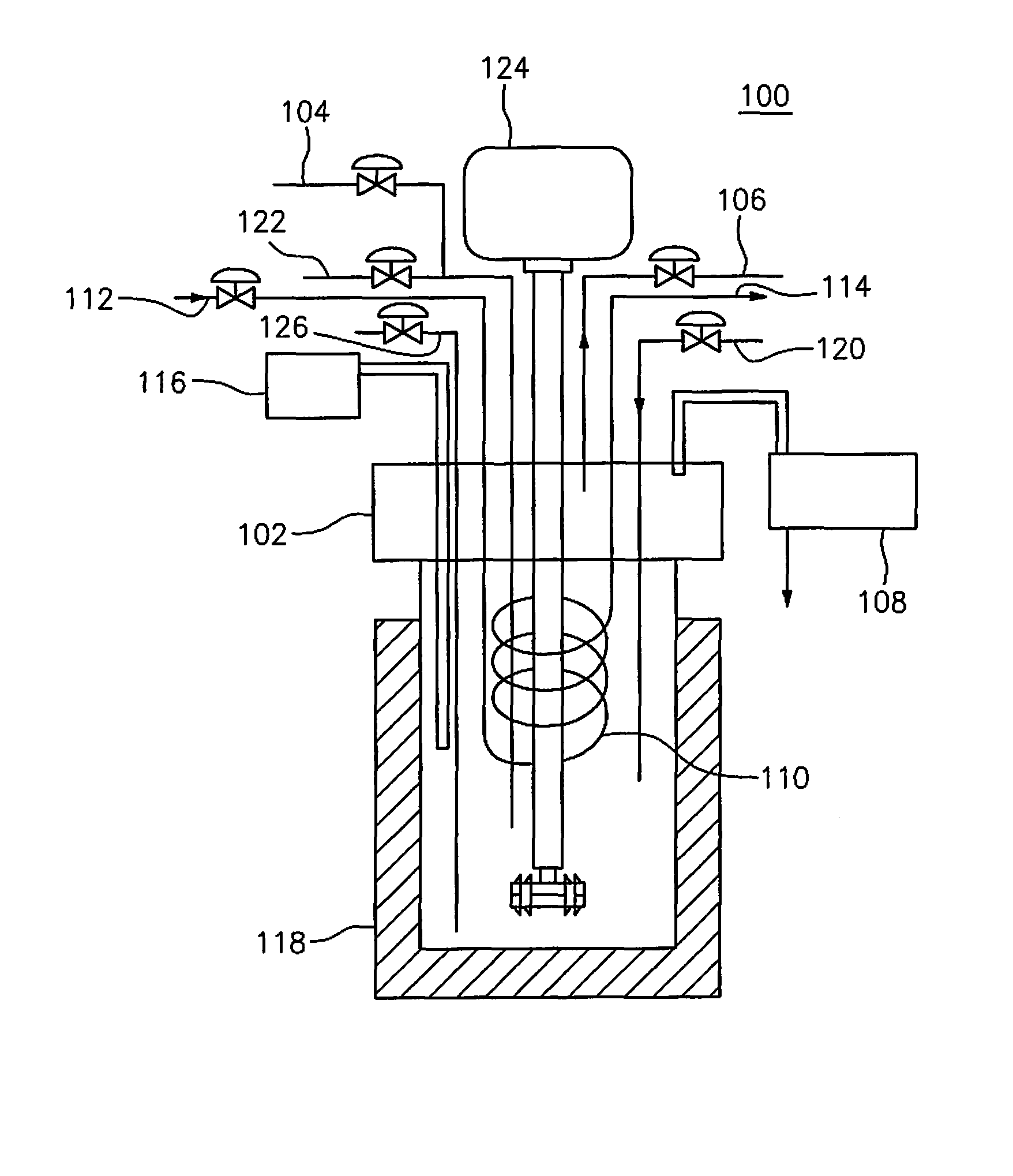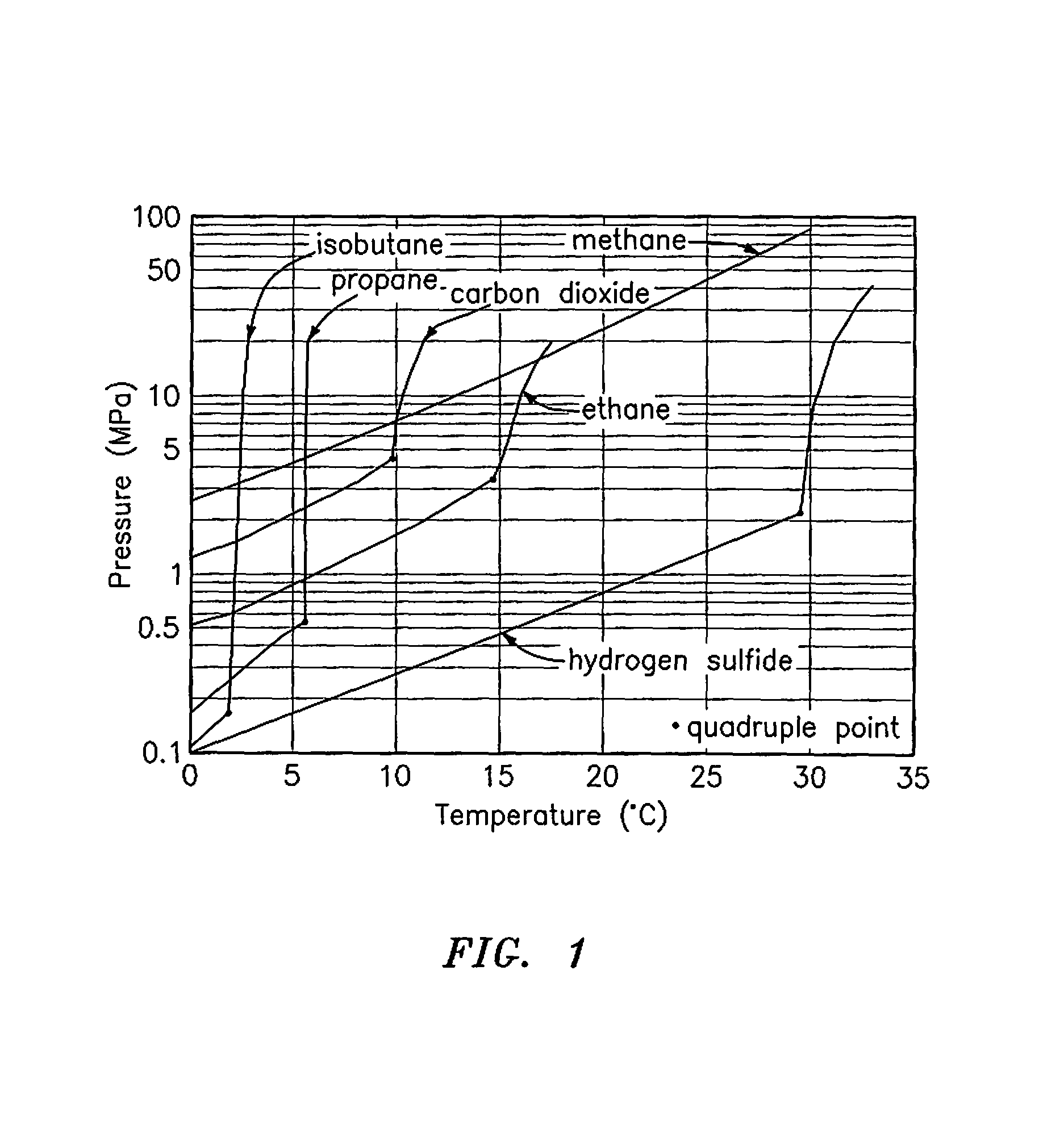Biogas purification apparatus and method for operation thereof
a biogas and purification apparatus technology, applied in lighting and heating apparatus, positive displacement liquid engines, separation processes, etc., can solve the problems of affecting the use of biogas as a renewable energy source, affecting the efficiency of biogas production, etc., to achieve the effect of reducing water requirements and high pressure spray
- Summary
- Abstract
- Description
- Claims
- Application Information
AI Technical Summary
Benefits of technology
Problems solved by technology
Method used
Image
Examples
example 1
[0047]The pressure vessel 102 is an enclosed 200 mL stainless steel vessel fitted with borosilicate glass windows along a length of the pressure vessel 102. For example, the windows are 1-14 inches long and one inch wide. The pressure vessel 102 can withstand pressures of up to 15 MPa and temperatures as low as −10° C. The windows allow for real time direct visual observation of clathrate formation in the pressure vessel 102 while the biogas purification reaction is in progress. The visualization feature simplifies monitoring of the reaction, and the reaction is generally stopped within 1-30 minutes into the clathrate formation period.
[0048]The pressure vessel 102 is also fitted with the dip tube 126 through which impure biogas enters the vessel. The dip tube 126 extends below the liquid level in the pressure vessel, whereas the gas inlet 104 remains above the liquid level. In the present embodiment, the dip tube 126 forces the entering biogas through an aqeuous solution provided wi...
example 2
[0049]The pressure vessel 102 is initially cooled to between 1° C.-5° C. and biogas is then introduced. Alternatively, an aqueous solution within the pressure vessel 102 is cooled to between 1° C.-5° C. after biogas is introduced to the vessel.
example 3
[0050]The pressure vessel 102 of a 200 mL volume is used. A 75 mL aqueous solution of distilled water and about 0-1000 parts per million (ppm) Sodium Dodecyl Sulphate (SDS), or more preferably 300 ppm of SDS, is injected into the pressure vessel 102 through the liquid / gas inlet 120. The addition of the SDS solution hastens hydrate formation. Then, CO2 gas is gradually bubbled into the SDS solution through the dip tube and the pressure vessel 102 is cooled to a temperature of approximately 2° C.
[0051]The pressure and temperature values of the pressure vessel 102, 2° C. and 2 MPa, respectively, along with visual observation, indicate when the separation of the CH4 from the impurities is at a clathrate formation equilibrium, which is the point where hydrate formation stops. Upon reaching equilibrium, white CO2 hydrates accumulate in the aqueous phase, but not at the gas-liquid interface. The liquid interface does not freeze throughout the hydrate formation event, indicating that the hy...
PUM
| Property | Measurement | Unit |
|---|---|---|
| temperature | aaaaa | aaaaa |
| pressure | aaaaa | aaaaa |
| temperature | aaaaa | aaaaa |
Abstract
Description
Claims
Application Information
 Login to View More
Login to View More - R&D
- Intellectual Property
- Life Sciences
- Materials
- Tech Scout
- Unparalleled Data Quality
- Higher Quality Content
- 60% Fewer Hallucinations
Browse by: Latest US Patents, China's latest patents, Technical Efficacy Thesaurus, Application Domain, Technology Topic, Popular Technical Reports.
© 2025 PatSnap. All rights reserved.Legal|Privacy policy|Modern Slavery Act Transparency Statement|Sitemap|About US| Contact US: help@patsnap.com



